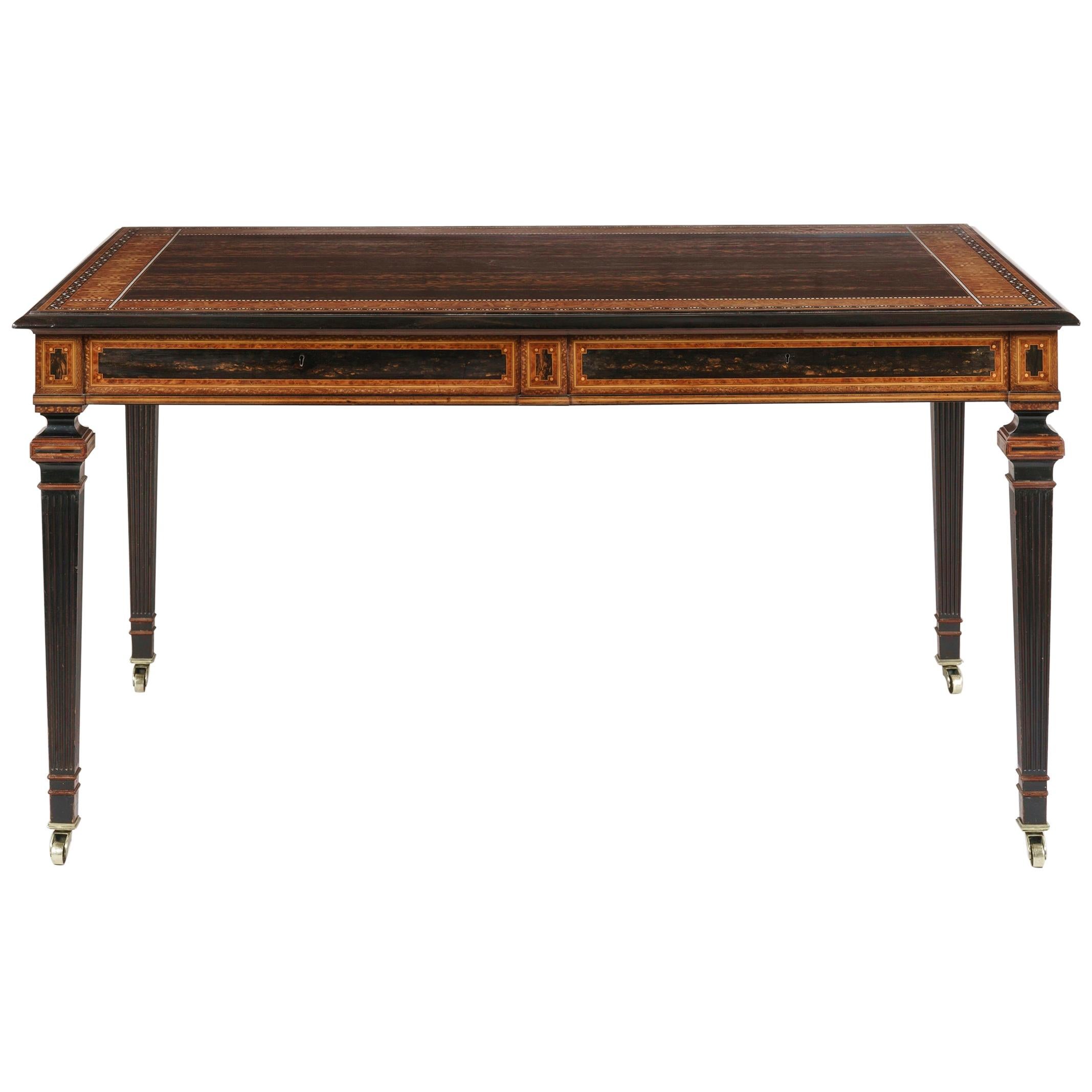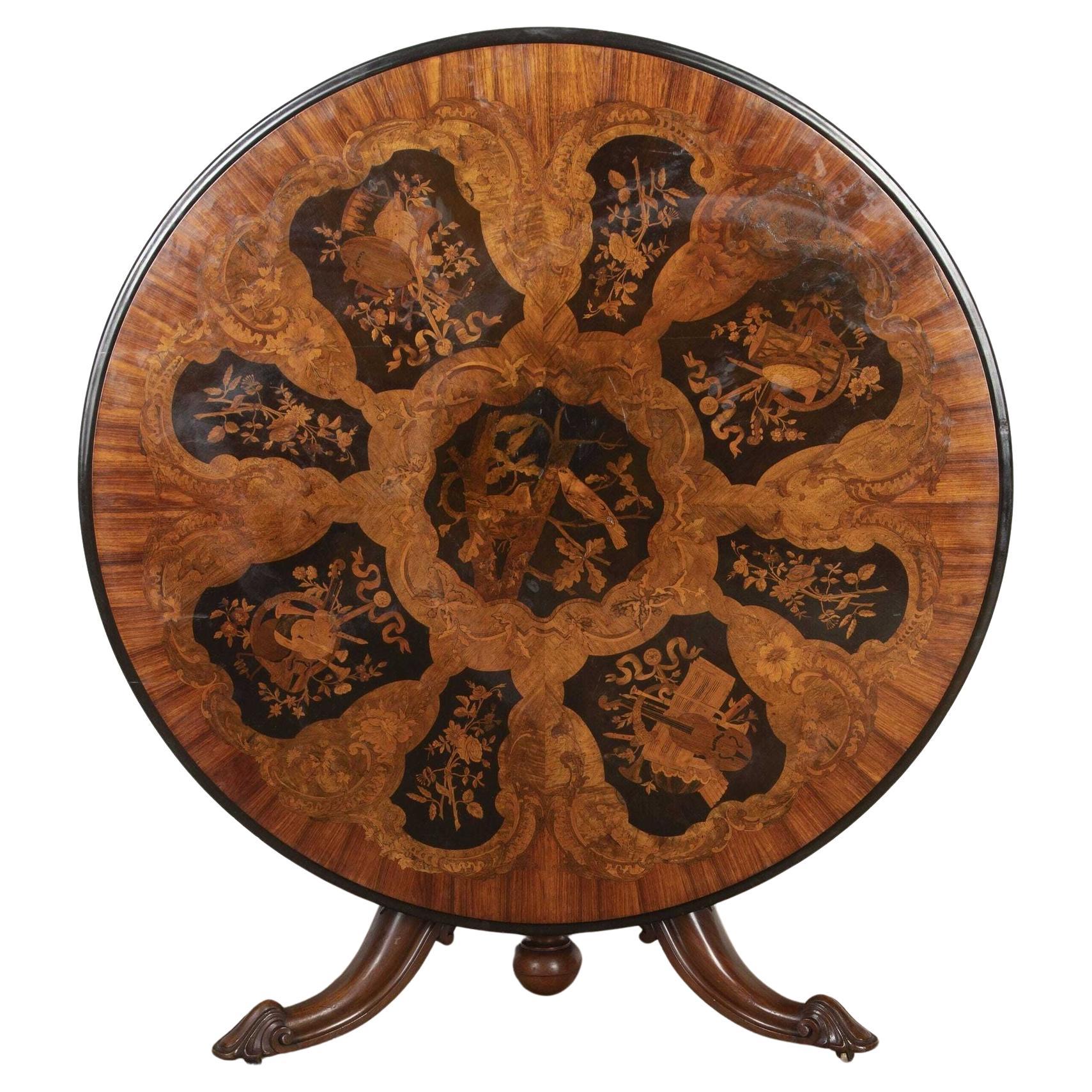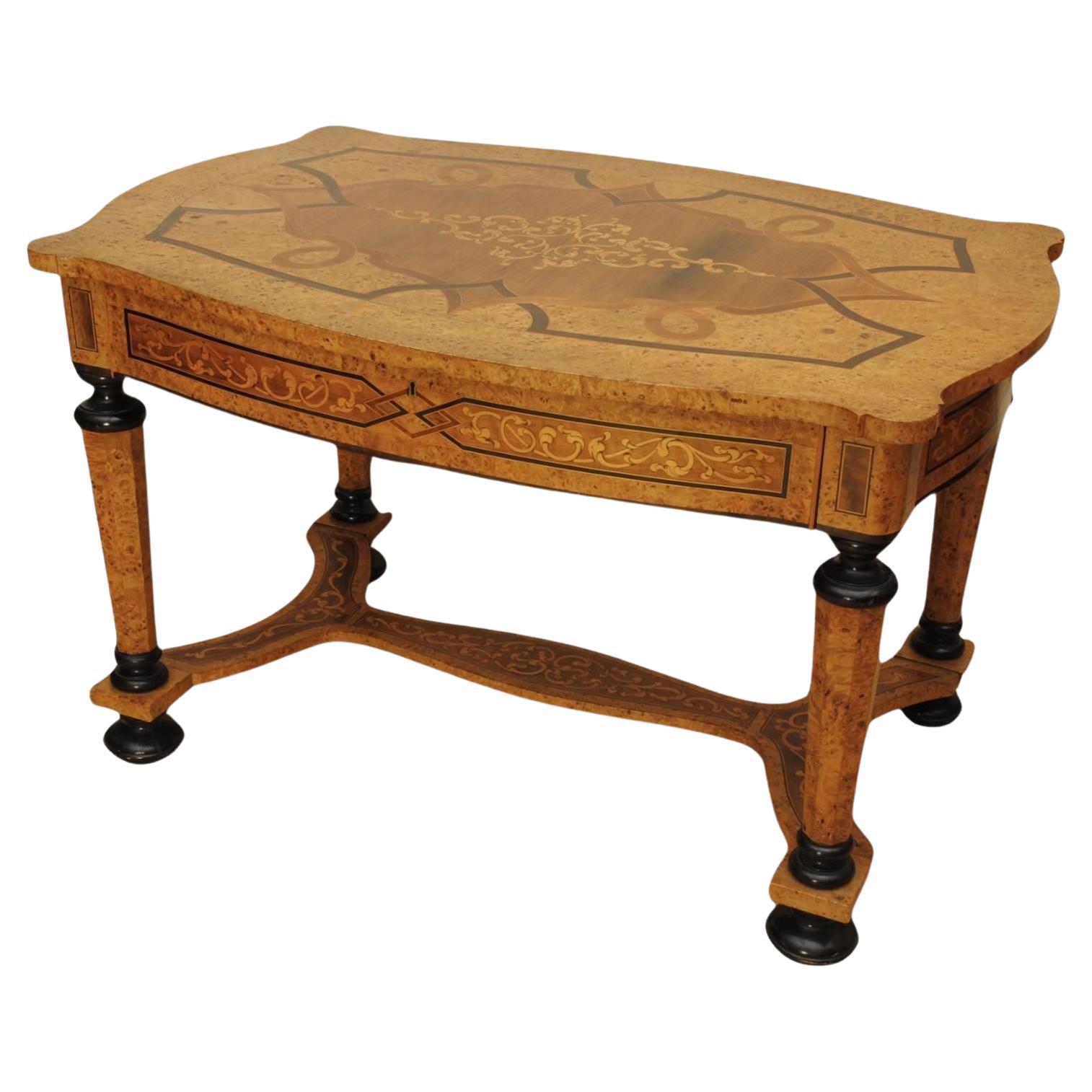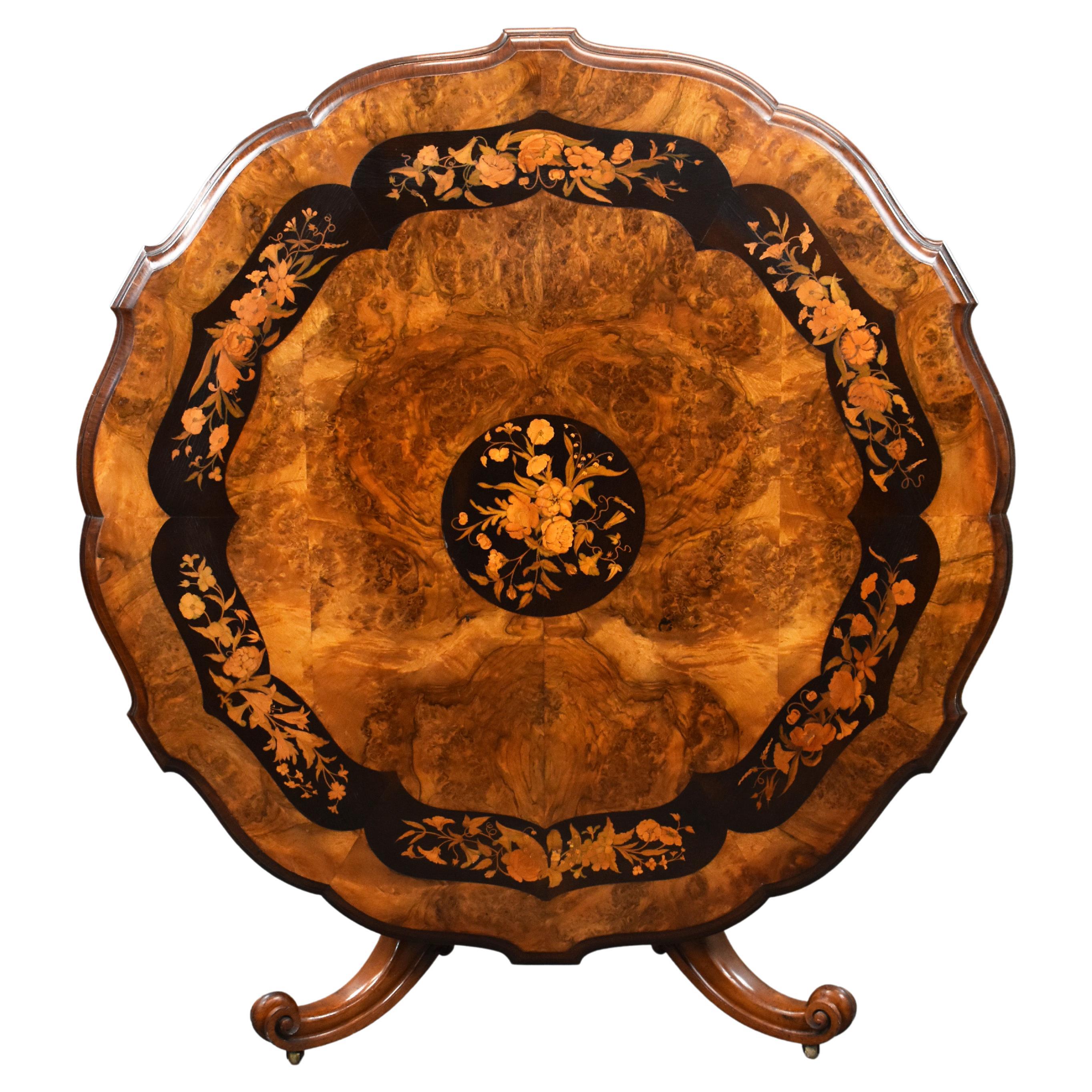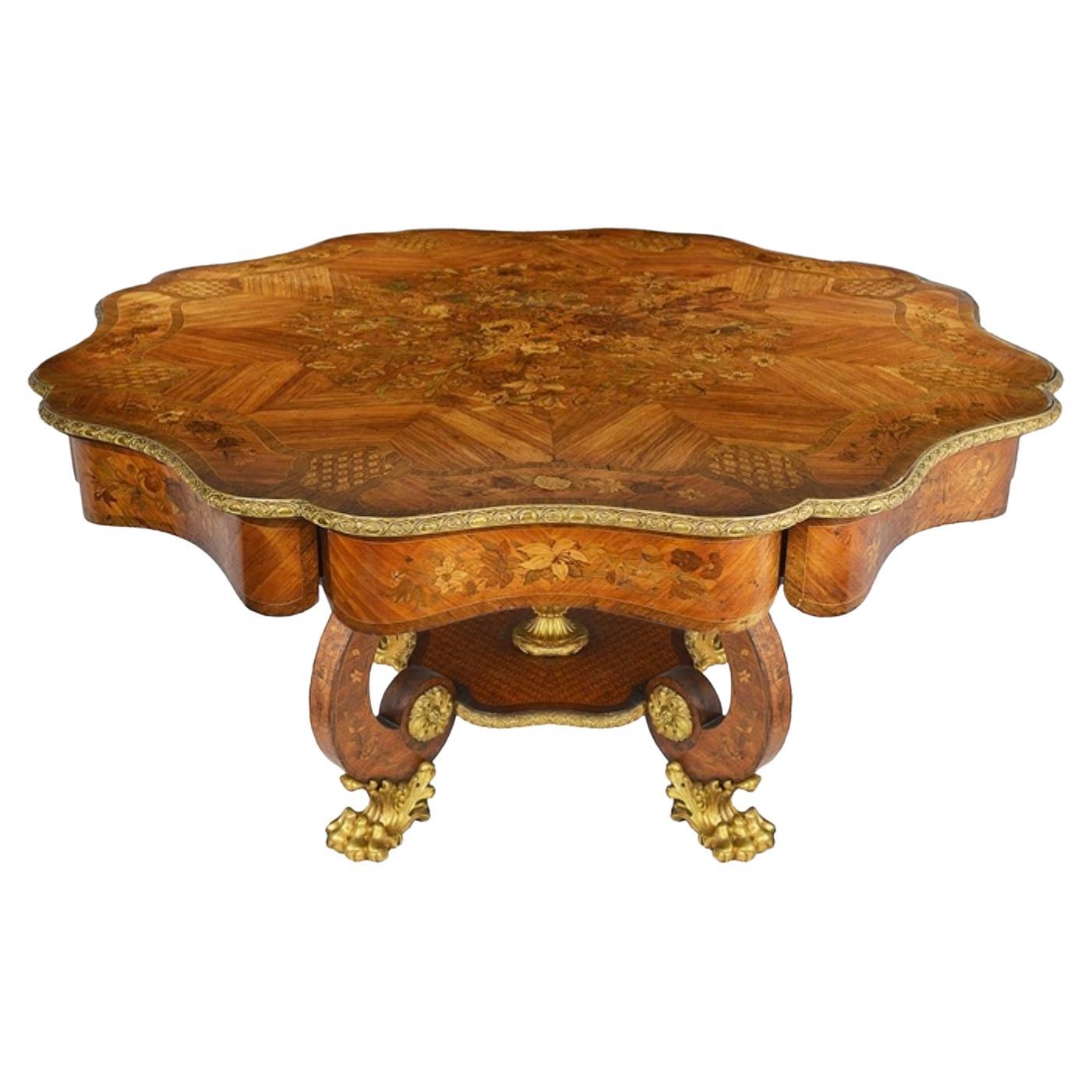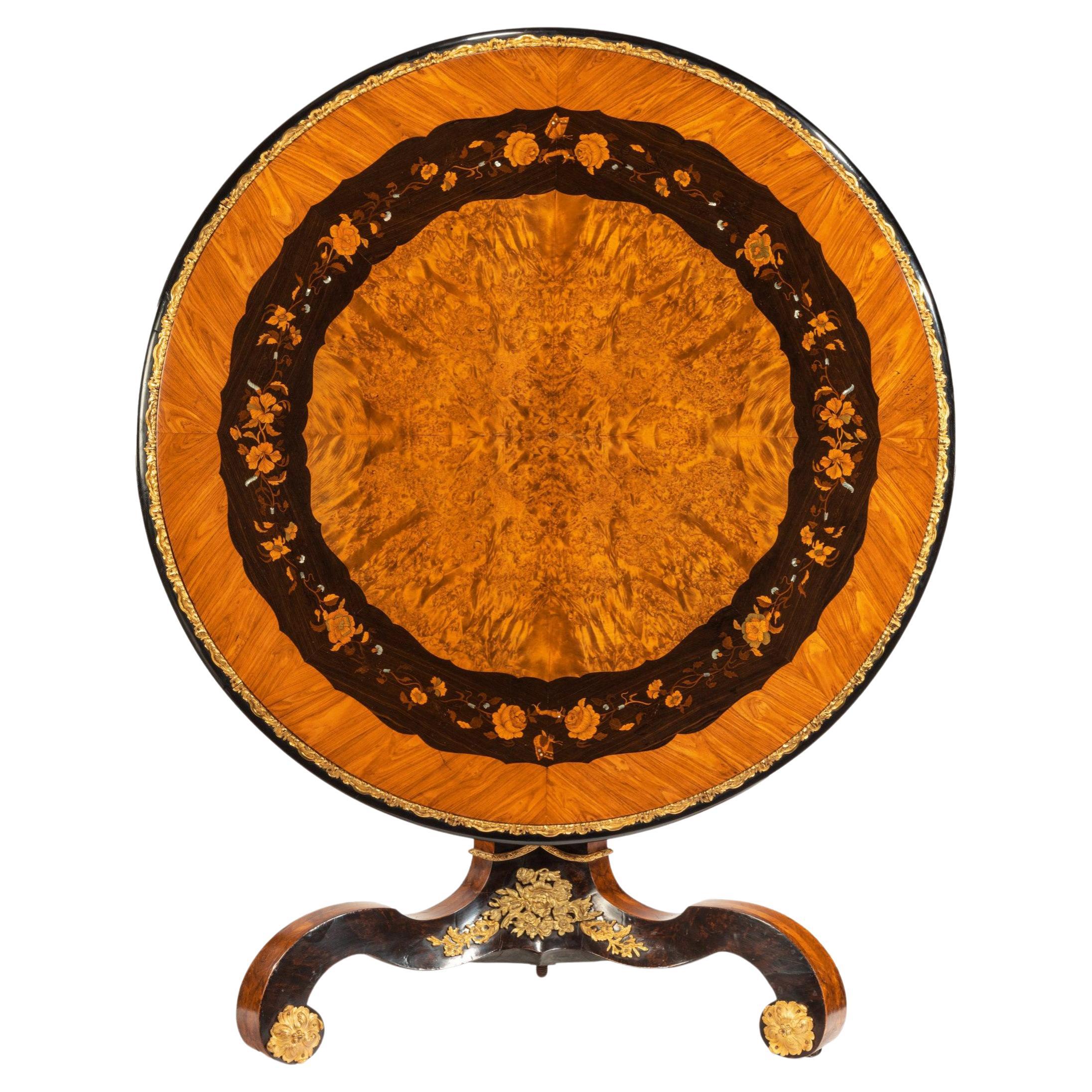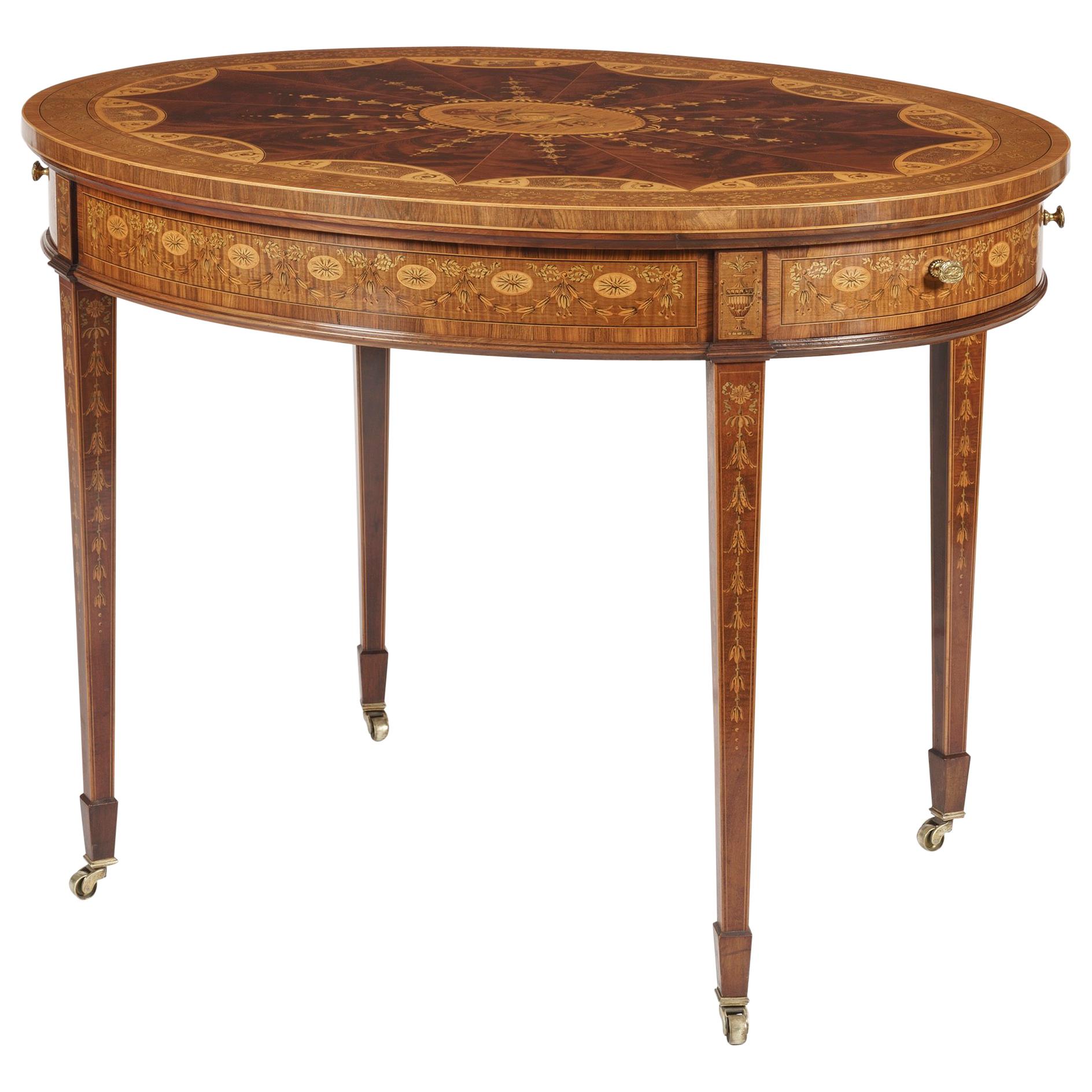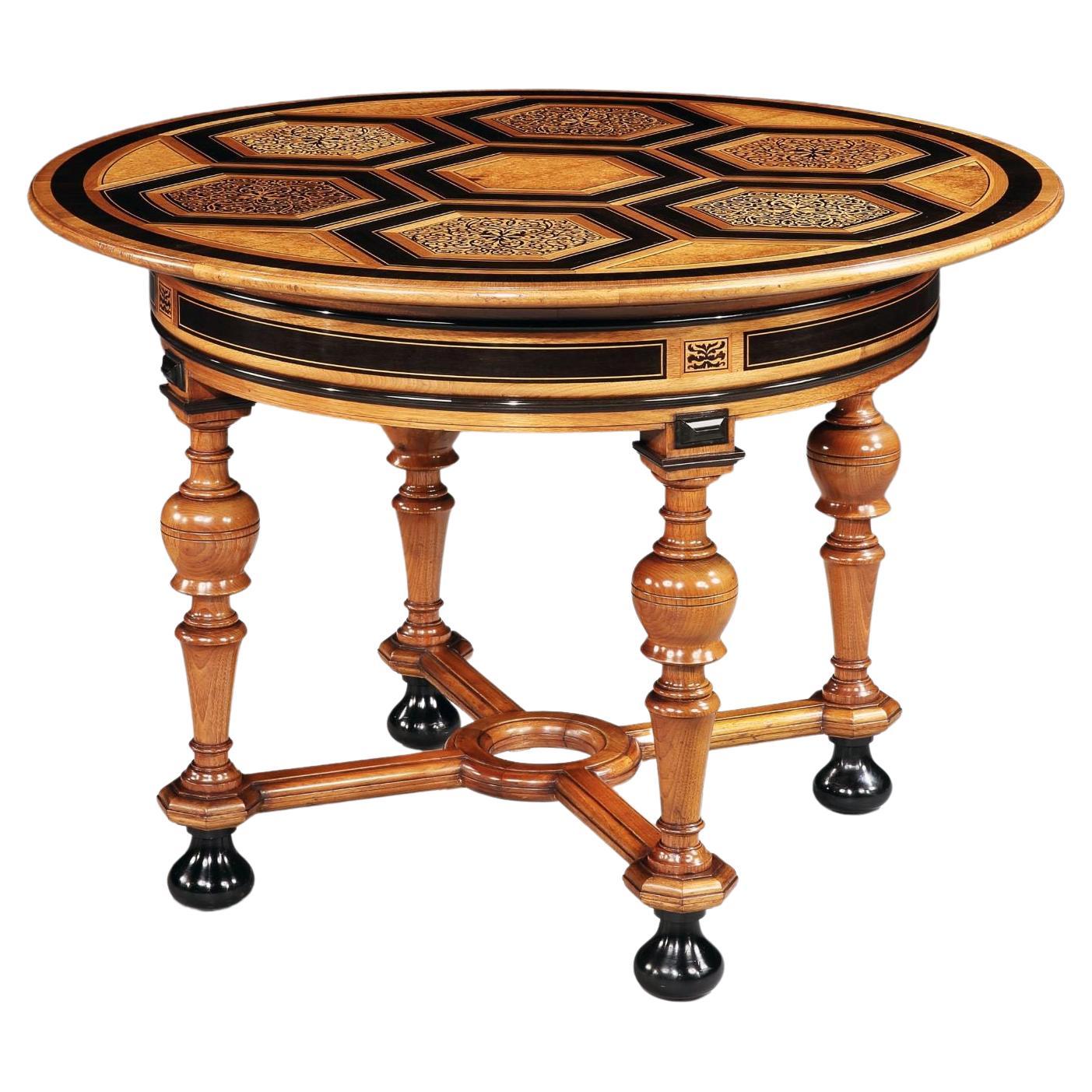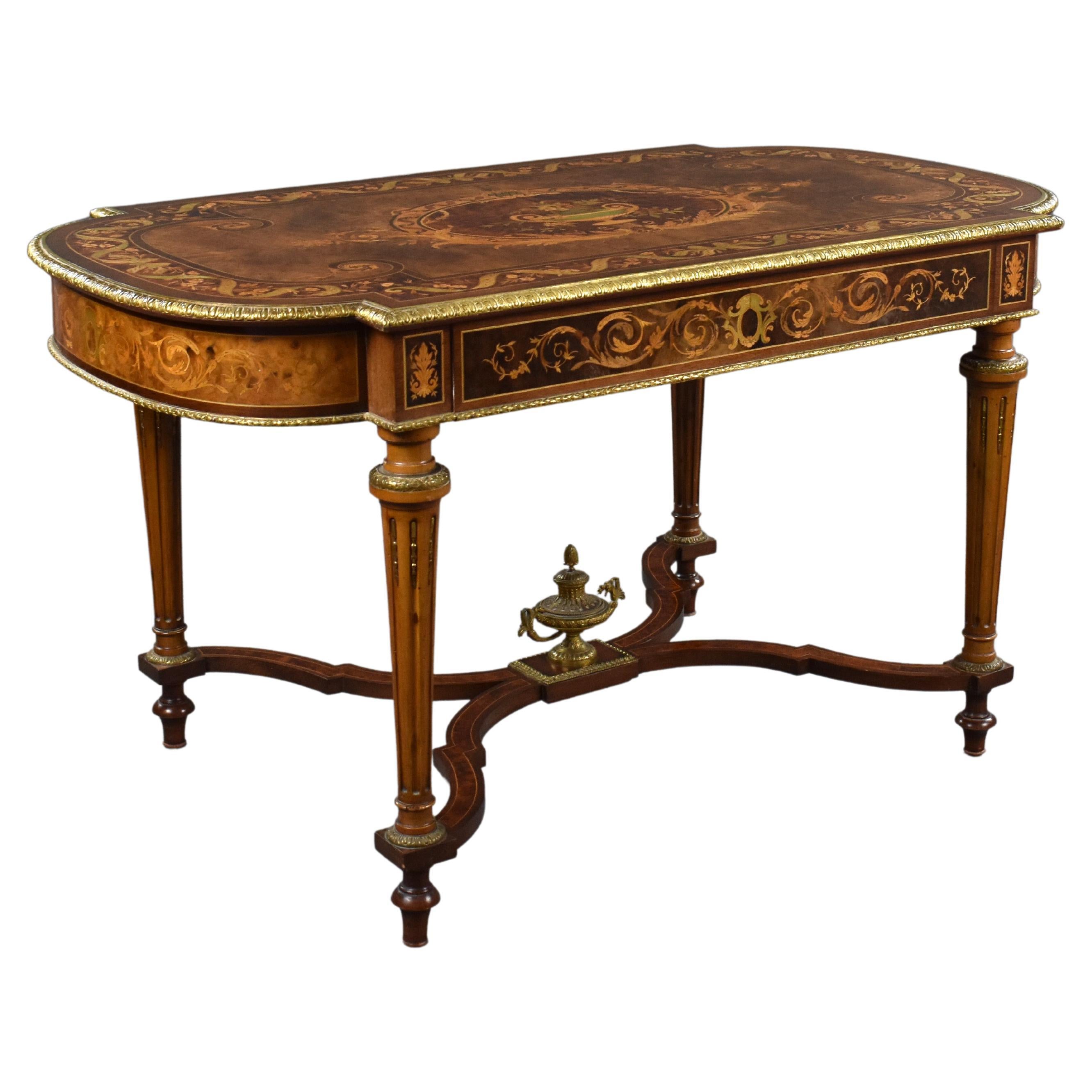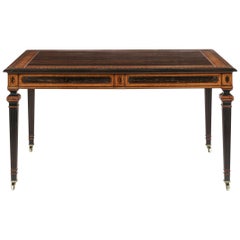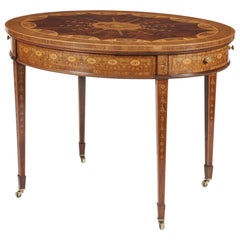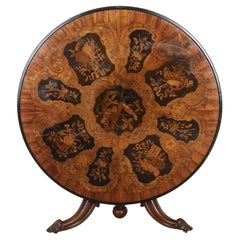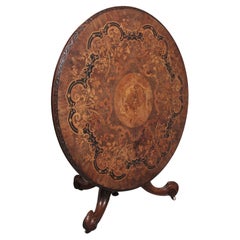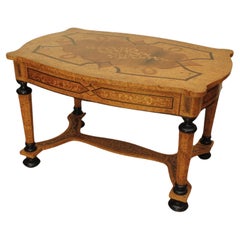
19th Century Marquetry Centre Table by Jackson & Graham
View Similar Items
Want more images or videos?
Request additional images or videos from the seller
1 of 3
19th Century Marquetry Centre Table by Jackson & Graham
About the Item
- Creator:Jackson & Graham (Cabinetmaker)
- Dimensions:Height: 29 in (73.66 cm)Width: 59.5 in (151.13 cm)Depth: 47.5 in (120.65 cm)
- Style:Victorian (Of the Period)
- Materials and Techniques:
- Place of Origin:
- Period:
- Date of Manufacture:Circa 1870
- Condition:
- Seller Location:London, GB
- Reference Number:Seller: 70021stDibs: LU95472761772
About the Seller
5.0
Recognized Seller
These prestigious sellers are industry leaders and represent the highest echelon for item quality and design.
Platinum Seller
These expertly vetted sellers are 1stDibs' most experienced sellers and are rated highest by our customers.
Established in 1964
1stDibs seller since 2012
42 sales on 1stDibs
Typical response time: 3 hours
Associations
The British Antique Dealers' AssociationLAPADA - The Association of Arts & Antiques Dealers
More From This SellerView All
- 19th Century Coromandel and Inlaid Table Attributed to Jackson & GrahamBy Jackson & GrahamLocated in London, GBA magnificent library table Attributed to Jackson & Graham Of free standing rectangular form, constructed in coromandel, with inlays in thuya, ebony, boxwood, and honeysuckle; the fluted legs rising from square brass castor-shod feet; the frieze housing two lockable drawers fitted with rare ‘tamper proof’ Chubb locks and having quadrant moulded cedar lined interiors; the platform having a central panel of beautifully chosen matched coromandel veneers, with an outer guard border of a running pattern of stylised anthemions; the ebony edges having a thumb nail moulding, circa 1865 The firm of Jackson & Graham established in 1836 by Thomas Jackson and Peter Graham at 37 Oxford Street London, and for the next fifty years produced predominately high quality furniture and represented Britain at many of the international exhibitions. Their clients included Queen Victoria, Napoleon III, the Grand Khedive of Cairo and the royal palace in Siam. They were particularly noted for their fine marquetry work, the use of Wedgwood plaques, rare woods, and fine casting of bronze mounts. They engaged the leading designers of the period, inter alia, Owen Jones, Bruce Talbert, Alfred Lorimer and Eugene Prignot. In the mid-1850s the workforce was recorded as 250, and by 1875, the company was employing 600 workers. They were feted exhibitors at many of the Great Exhibitions of the 19th century, and frequent prize winners. At the Paris International Exhibition of 1878, the furniture jury noted of them ‘ the workmanship is so perfect that even with the aid of a magnifying glass scarcely the slightest imperfection is to be found’. In 1885 the company was absorbed by Collinson and Lock, who continued their standard of excellence. Charles Chubb was apprenticed as a blacksmith before starting business as a ships’ ironmonger in Winchester. Jeremiah soon joined the business, and by 1818 the brothers had branched out into lockmaking, founding the famous Chubb Company. The business really got started when Jeremiah Chubb patented his new ‘detector lock’ in 1818. The lock was constructed so that if someone tried to pick it or open it with the wrong key it became inoperable. To make the lock work again the owner had to use a special key supplied with the lock. The aim of the detector lock was to prevent burglaries, and to warn the owner that someone had tried to break into their property. The lock soon became popular, and sales of the Chubbs’ products increased even more when they won a government competition to design a lock that could only be opened using its own key. After the invention of the detector lock, the Chubbs decided to move to Wolverhampton, which already had an established lock making industry. By 1838 they were making 28,000 locks a year at their Wolverhampton factory. Another product was added to the Chubb range in 1835 when a patent was taken out for a burglar resistant safe, and in 1837 the Chubb safe...Category
Antique 19th Century English Tables
MaterialsBrass
- 19th Century Mahogany and Satinwood Astrological Marquetry Centre TableBy Maple & Co.Located in London, GBA fine quality astrological centre table firmly attributed to Maple & Co Constructed in very finely figured mahogany and satinwood, and having marquetry inlay of superior quality...Category
Antique Late 19th Century English Victorian Center Tables
MaterialsMahogany, Satinwood
- Exquisite 19th Century Burl Walnut and Marquetry Centre TableBy Richard BridgensLocated in London, GBAn Exhibition-Quality Burr Walnut and Marquetry Centre Table Designed by Richard Bridgens (1785-1846) The circular top characterised by a central quarter-veneered field of beauti...Category
Antique 19th Century English Center Tables
MaterialsTulipwood, Walnut, Wood
- 19th Century English Walnut with Marquetry Center TableBy Johnstone, Jeanes & Co.Located in London, GBA mid-19th century center table by Johnstone & Jeanes of London. Constructed in walnut, with detailed marquetry inlay work and brass and gilt highlights; rising from a castor shod tripartite knurled and scrolled cabriole legged base issuing turned, tapering and carved columns supporting the tilt-top platform; the circular top of finely figured Circassian walnut inlaid with floral arabesques. The lower rim having a bronze running pearl border. Stamped to the underside 'Johnstone and Jeanes...Category
Antique 19th Century British Victorian Center Tables
MaterialsWalnut
- Mid-19th Century Amboyna Octagonal Centre TableBy Johnstone, Jeanes & Co.Located in London, GBA good centre table by Johnstone & Jeanes of London Constructed in amboyna, with extensive marquetry inlays in specimen woods, and enhanced with parcel-gilt highlights. Rising from a cruciform platform base adorned with knops and having concealed castors, supporting the inlaid, and gently stepped and tapering centre column with stylized 'c' form brackets bracing the octagonal top, the outer guard band having English roses inlaid at the angles, with foliates with the national emblems of Scotland and Ireland, thistles and shamrocks. Stamped by the makers to the underside, 'Johnstone & Jeanes 67 Bond Street'. circa 1845 Published in “British Furniture 1820 to 1920” by Christopher Payne, 2023, p. 131, illustrated fig. 3.21. Johnstone, Jeanes & Co John Johnstone of Bond Street came to prominence after his collaboration with Robert Jupe, an 'upholder' of 47 Welbeck Street, Cavendish Square, London, who patented a remarkable design for a circular expanding dining table with a segmented top in 1835. After Jupe's death, the firm traded as 'Johnstone and Jeanes' from 1842 until 1880, having moved to 67 Bond Street and continuing the tradition of producing high quality furniture. After 1880, the company was re-named Johnstone & Norman. They exhibited at the Great Exhibition 1851, The International Exhibition of London in 1862, and The Paris Exhibition of 1878. Both the Royal Collection Trust and the Victoria & Albert Museum own stamped pieces of furniture in their collections. The company of Crace were designers and decorators to the Royal household from 1768 until 1899, working for every monarch from George the Third...Category
Antique Mid-19th Century English Center Tables
MaterialsAmboyna, Wood
- English 19th Century Marquetry Circular Center TableLocated in London, GBA Remarkable Late Georgian Circular Table Of a size most unusual in circular tables, constructed in various specimen woods on a San Domingo ma...Category
Antique 19th Century English Georgian Center Tables
MaterialsMahogany
You May Also Like
- 19th Century Marquetry Centre TableLocated in Gloucestershire, GBWonderful 19th Century marquetry centre table. This table is composed of satinwood, rosewood and ebony with mahogany tripod base on brass casto...Category
Antique 19th Century British Country Center Tables
MaterialsMahogany
- 19th Century Walnut and Marquetry Centre TableLocated in Martlesham, GBAn exhibition quality 19th century walnut and marquetry centre / breakfast table, the circular top having a decorative foliate carved edge, profusely inlaid with exotic specimen timb...Category
Antique 1860s British Victorian Center Tables
MaterialsWalnut
- 19th Century German Marquetry Centre TableLocated in Lincolnshire, GBA 19th century German burr field maple marquetry inlaid table of lovely colour and decoration, with a drawer to the front frieze. The whole inlaid with flowing floral design and the ...Category
Antique Mid-19th Century German Center Tables
MaterialsMaple
- 19th Century Victorian Burl Walnt & Marquetry Centre TableLocated in Chelmsford, EssexFor sale is a top quality Victorian burr walnut and marquetry centre table. The table top is ornately shaped and decorated with very fine floral marquetry inlay. This is above a marquetry inlaid base, standing on three shaped and carved legs terminating on castors. This table was made by John Kendall & Co. The table is in good condition, showing minor signs of wear commensurate with age and use. J Kendall...Category
Antique Early 19th Century English Victorian Center Tables
MaterialsWalnut
- Fine 19th Century Marquetry Inlaid Centre TableLocated in Brighton, SussexThis wonderful quality 19th century marquetry inlaid table, having birds, flowers, foliage and butterflies in the centre, radiating veneers, the cross banding having panels of flower...Category
Antique 19th Century English Center Tables
MaterialsMahogany
- Exceptional 19th Century Marquetry Centre Table, Edward Holmes BaldockBy Edward Holmes BaldockLocated in Benington, HertsAn exceptional marquetry and ormolu centre table of exhibition quality attributed to Edward Holmes Baldock. English, circa 1840. Finely co...Category
Antique Mid-19th Century British Early Victorian Center Tables
MaterialsEbony, Maple, Tulipwood
Recently Viewed
View AllMore Ways To Browse
Aluminum Panel Platinum Leaf
Borsani T 41
Del Mar Dos
19th Century Irish Mahogany Center Table
Empire Breakfast Table
Antique Brazier Table
Victorian Marble Top Parlor Table
Kanyon Coffee Table
Kanyon Coffee
Large Mahogany Drum Table
Ebonized Small Round Dining Table
Kenneth Cobonpue Croissant
19th Century Chinese Hardwood Centre
Antique Eastlake Carved Parlor Table
White Violet Marble Top
Round Tavern Table
Herter Brothers Table
Francesco Molon Used Furniture
